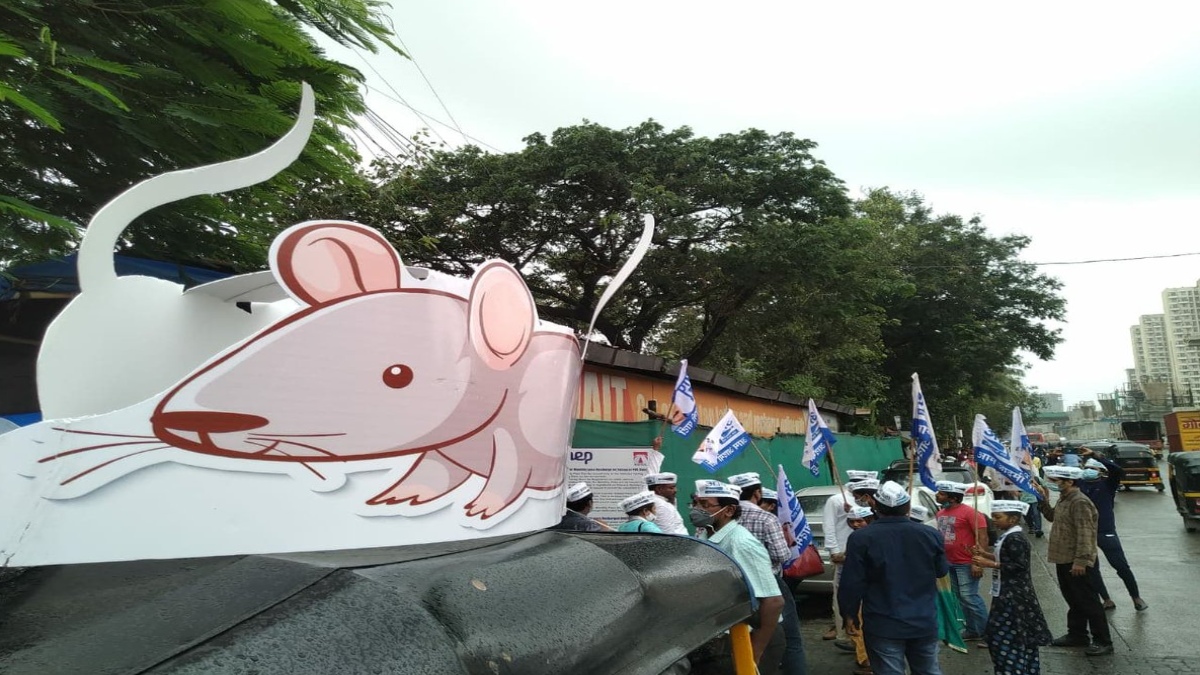


As a part of Mumbai’s celebrations of the auspicious Ganesh Chaturthi, the Aam Aadmi Party Mumbai today, held the second day the Mooshak Yatra, with Lord Ganpati’s aide – Mooshak, to witness the unfathomable plight of the daily lives of Mumbaikars. Escorting the Mooshak, AAP leaders Sumitra Shrivastav and Gopal Jhaveri visited the Mithi – a case of how Mumbai’s rivers are subject to excessive concretization, crippling the city’s natural flood drainage and exacerbating Mumbai’s flood risk; and pollution from untreated sewage, being released directly into the river streams. Mumbai’s annual floods are manmade disasters, borne out of the BMC’s sheer ignorance for the repeated warnings of scientists & environmentalists, and the Shiv Sena’s blatant refusal to pay heed to the recommendations of the 2006 Chitale Committee report, post the 2005 Mumbai floods.
Today, the Mithi serves as a ‘nala’, with 54% of its original floodplains and beds having been encroached upon & concretized, and untreated sewage being dumped directly into the river stream. Reclamation of the banks, by constructing concrete walls (called ‘Levees’) have allowed for encroachment by developers on the surrounding wetlands & floodplains. Plastic and industrial waste have choked the river-steams and shut off the flow of water from natural inlets. Mumbai continues to discharge 1842 million liters of sewage directly into our water bodies, including the Mithi.
The 2006 Chitale Fact Finding Report gave clear directions for action to save Mumbai from floods. 15 years later,10 major recommendations have still not been acted upon, including banning & reversing concrete development on river flood plains; separation of sewage from storm water; conservation of natural ecosystems including mangrove and wetland protection; solutions for reckless dumping of construction debris; etc.